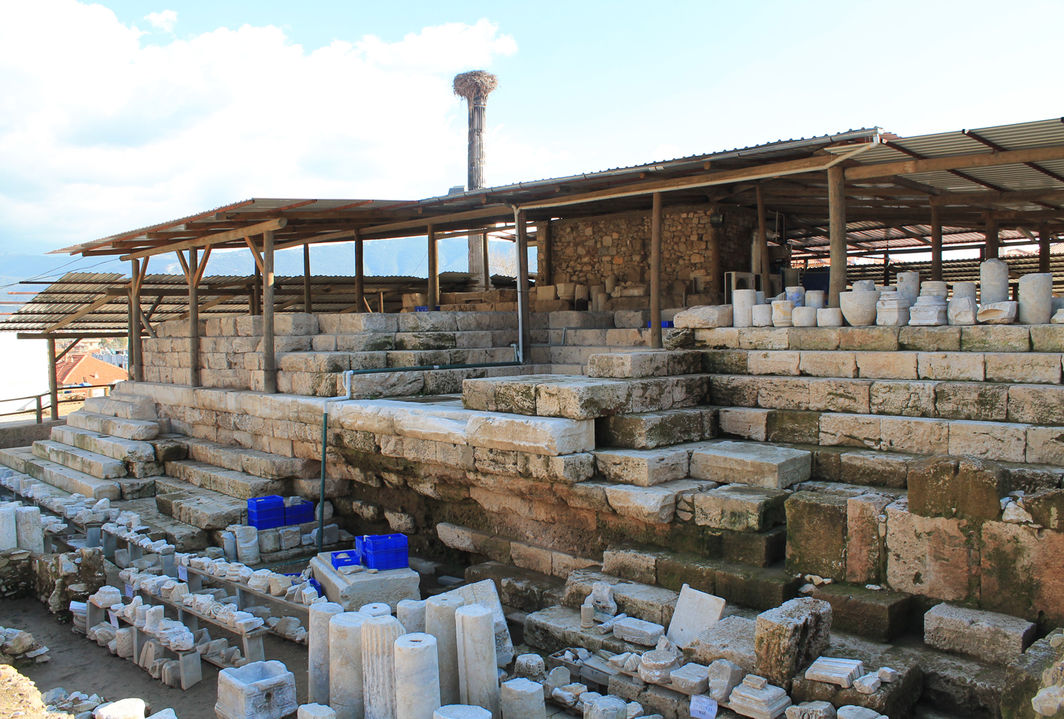The mentioned Mausoleum and Sanctuary; It consists of Temenos Wall, Menandros Honor Column, Podium and Tomb (Carrier Room, Burial Chamber, Sarcophagus and Dromos). Considered one of the seven wonders of the ancient world and carrying the concept of “Mausoleum” (Mausoleum), the monument is unique in that it is the only example that has survived to the present day and belongs to the father of Mausolus in the same dimensions, at an earlier period than the “Mausoleum of Halicarnassus” (Halicarnassus Mausoleum). has a value.
Hecatomnus of Mylasa or Hekatomnos was an early 4th-century BC ruler of Caria. He was the satrap (governor) of Caria for the Persian Achaemenid king Artaxerxes II (404–358 BC).
However, the basis for Hecatomnus’ political power was twofold: he was both a high appointed Persian official and a powerful local dynast, who founded the hereditary dynasty of the Hecatomnids. The Hecatomnids followed the earlier autochthonous dynasty of the Lygdamids (520-450 BC) in Caria.
 Biography
Biography
Hecatomnus was the son and successor of Hyssaldomus, a dynastic ruler of Mylasa. It is likely that Hecatomnus had been a supporter of Tissaphernes and might have been employed by him in the subordinate office of hyparch.
At some time after 395 BC Hecatomnus became the first satrap of Caria, which was until then part of other satrapies, usually that of Lydia. The designation of Caria as a separate satrapy was part of a reorganization of Persian power in western Anatolia by Artaxerxes II in the aftermath of Cyrus’s revolt. Hecatomnus was the first non-Persian official to be elevated to the position of satrap.
He acceded as satrap perhaps in 394 BC, but no later than 390 BC, when he was appointed by the Persian king to command the naval forces destined to take part in the war against Evagoras I of Cyprus.
Isocrates states that he was still ruling in 380 BC. Stephen Ruzicka places his death in 377/376 BC.
He left three sons, Mausolus, Idrieus and Pixodarus, and two daughters, Artemisia and Ada, who were married to their brothers, Mausolus and Idrieus, all five of whom in turn succeeded him as rulers.
The Mausoleum is now classified as a UNESCO World Heritage Site. It is considered very important for understanding of Carian art and craftsmanship as it was built by their best architects and sculptors and was a predecessor of the magnificent Mausoleum at Halicarnassus.


